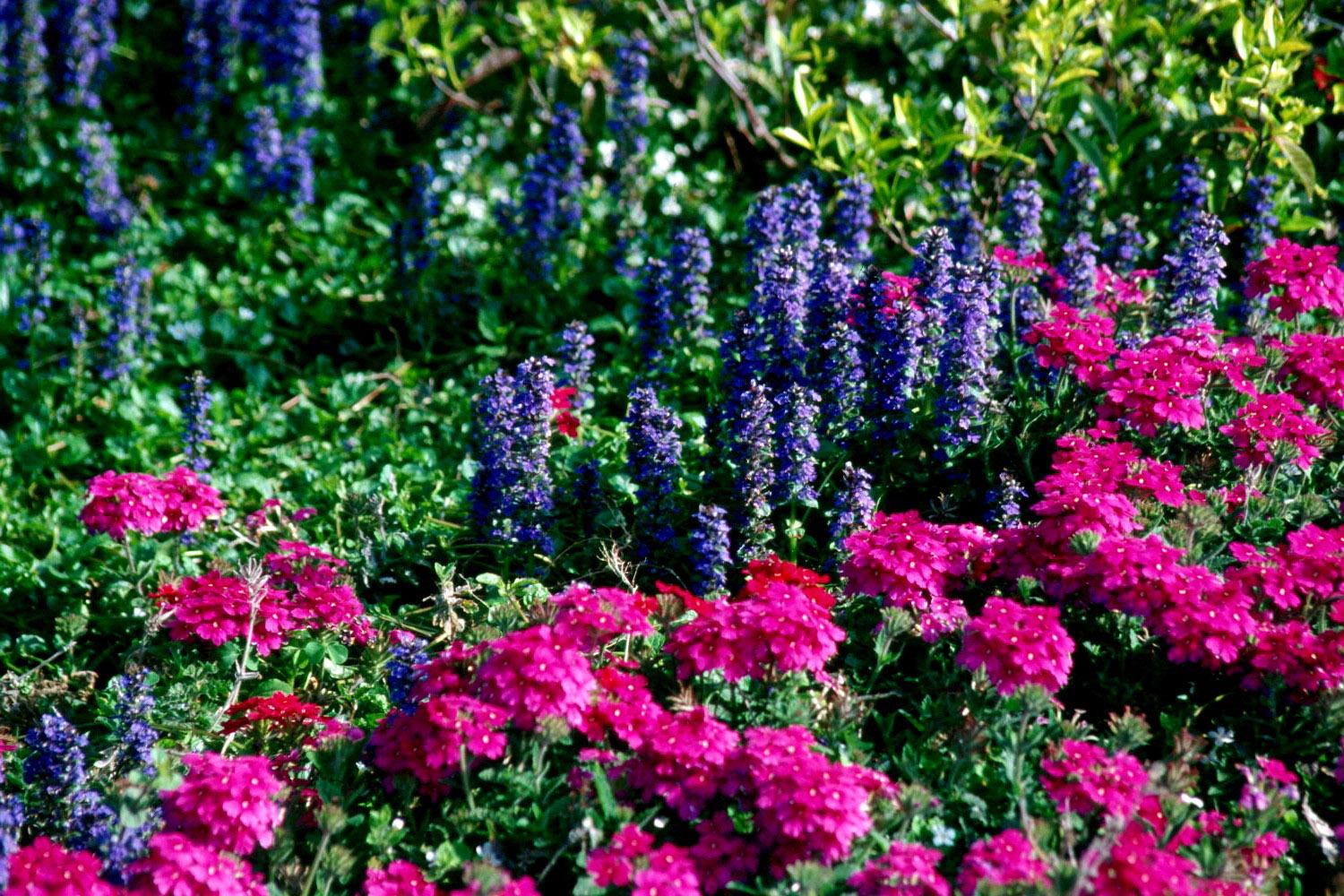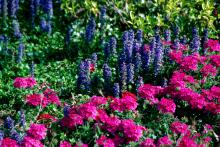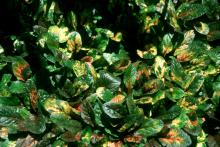Information Possibly Outdated
The information presented on this page was originally released on March 17, 2003. It may not be outdated, but please search our site for more current information. If you plan to quote or reference this information in a publication, please check with the Extension specialist or author before proceeding.
Ajuga offers colorful groundcover qualities
By Norman Winter
MSU Horticulturist
Central Mississippi Research & Extension Center
At one of the entrances to Northpark Mall in Jackson, a recently planted flower bed reveals wonders about a plant most people take for granted. The bed contains a fairly new variety of ajuga called Mahogany, which is known for its dark purple leaves and bright blue flowers.
Ajuga is quite versatile: In this bed, it was planted in combination with Butterfly Blue scabiosa, a recent perennial plant of the year, making for a very showy display.
Most gardeners have not taken advantage of the flower possibilities mixed in the perennial border nor do they realize some of the available foliage colors.
Ajuga is a plant for the entire state: In fact, while visiting the home of a well-known nurseryman during the Garden and Patio Show in Gulfport, he boasted of having the most beautiful bed of ajuga around. Ajuga is cold hardy from zone 3 through 9 and is related to salvia and coleus. With a height of 4 to 12 inches, they are well suited for the front of the bed.
Ajuga, also known as Bugle Weed, is an aggressive, persevering groundcover, so it can be used in a wide variety of soils and light conditions. It quickly spreads by runners, forming a dense mat of colorful foliage, accompanied by outstanding blue or pink spring flowers.
Despite its durability, ajuga does best in fertile, well-drained soil. A site in morning sun and afternoon shade or high-filtered light allows ajuga to really look its best. However, it is not uncommon to find exceptional plantings in full sun. Nursery-grown plants can be set out anytime during the growing season with early spring or fall being ideal. Space plants 6 to 12 inches apart.
Ajuga is very easy to grow. Keeping it confined to a designated area may be the biggest challenge. After the spring bloom, deadhead the flowers for a tidy look and to maximize air circulation. This can be accomplished with a string trimmer, mower or by hand pruning. Dividing every two to three years will also increase air movement. Reduced air circulation can accentuate crown rot.
Ajuga is used as a groundcover most often, particularly in areas where grass is shade-challenged. Also, use the flowers as border plants, or be bold by growing them in large drifts in a perennial bed. Try combining ajuga with plants such as alyssum, bacopa, petunias and verbenas.
There are more varieties than most realize. Some of the best selections include: Bronze Beauty with metallic bronze foliage, Burgundy Glow that has silvery green and burgundy foliage, Catlin's Giant with large bronze/green leaves, and Mahogany with dark glossy purple leaves.
The one that may be the prettiest is known as Multicolor. This one is as colorful as carnival time in Rio. The leaves display red, pink, gold and green. Believe it or not, this is just a sampling of about 20 available selections.
Spring is practically here, so as you shop your local garden center, keep your eyes open for some of the pretty varieties of ajuga. You will get a plant that will persevere for a long time in your garden with just a little soil preparation.




